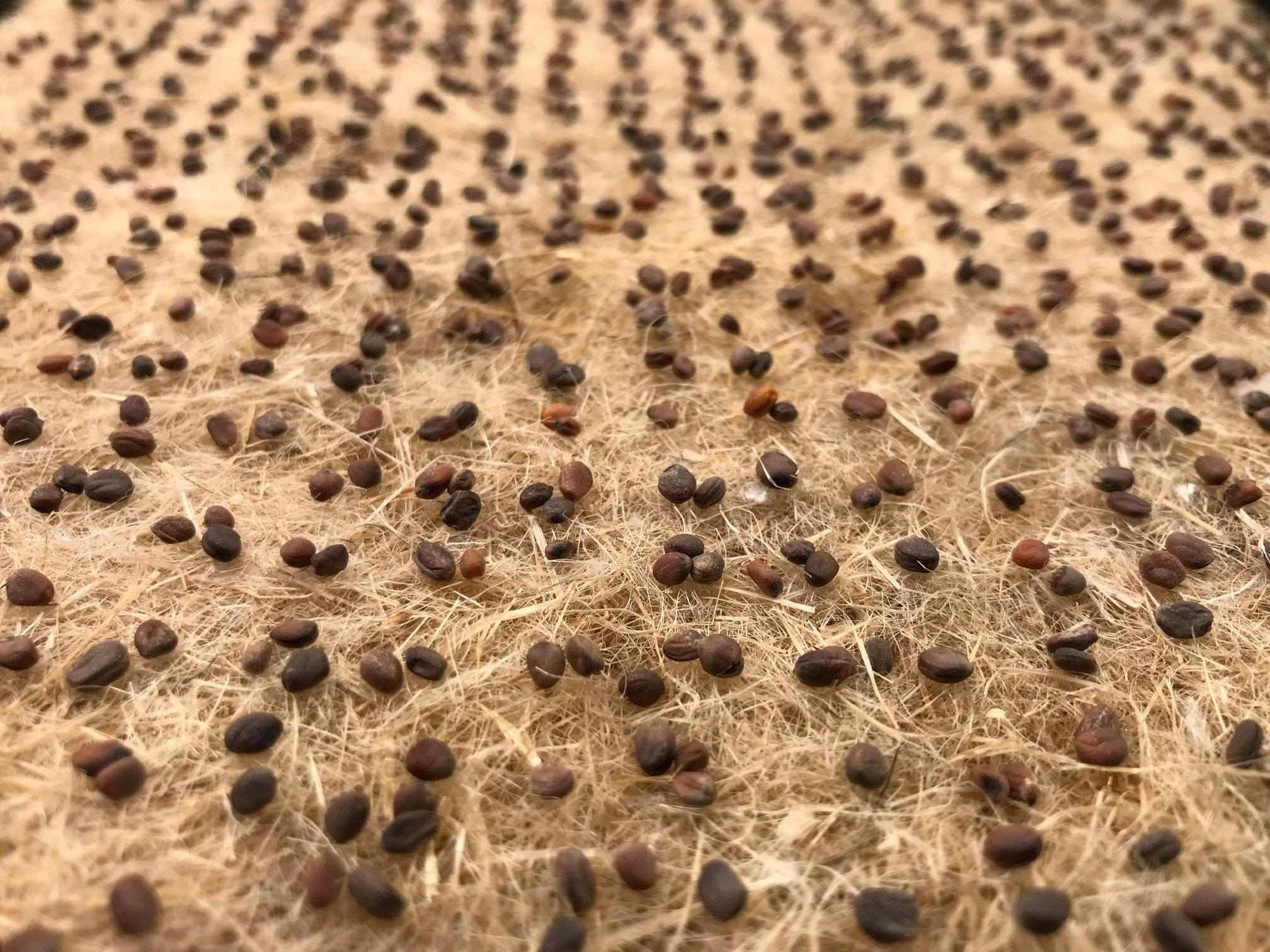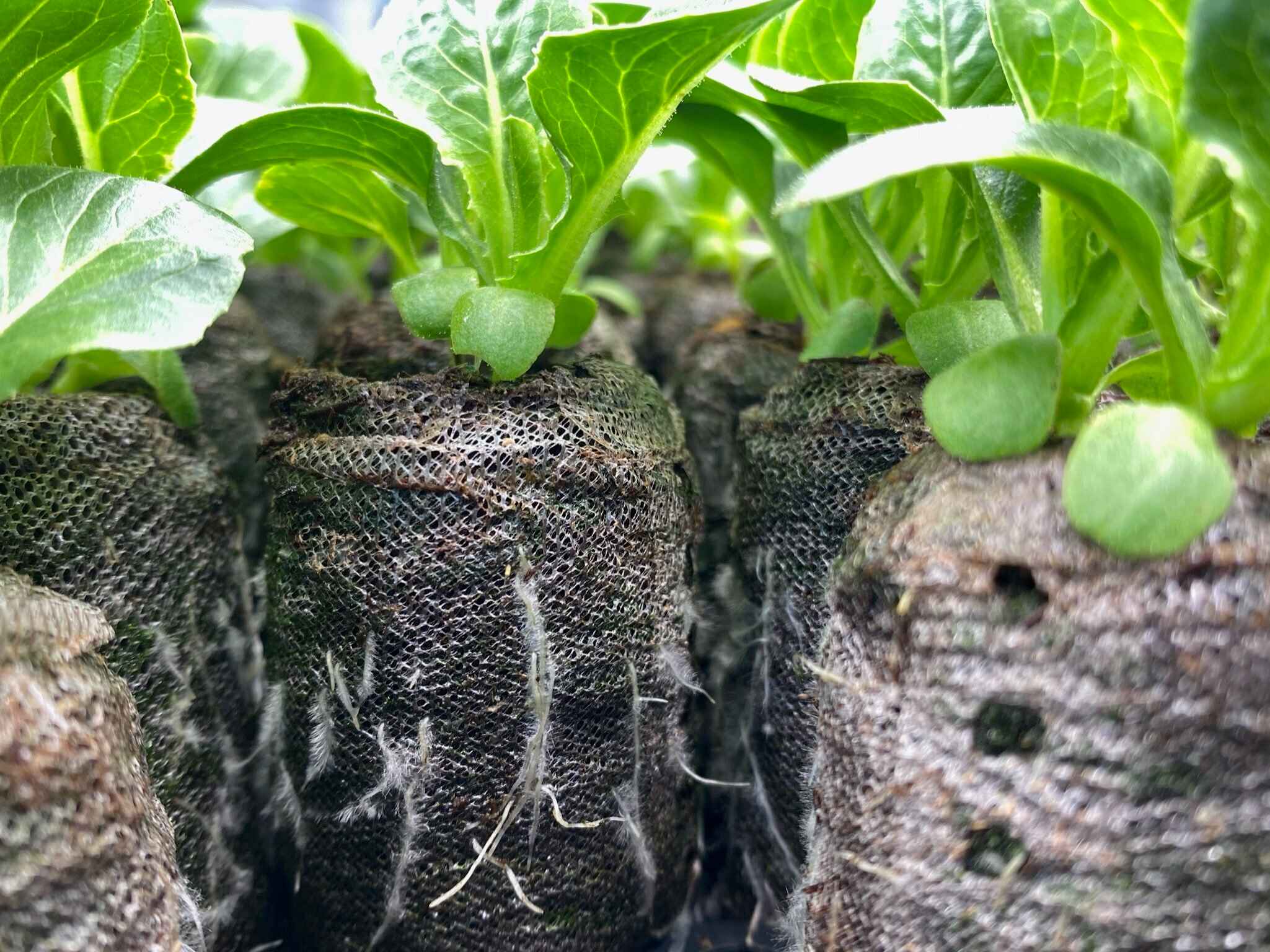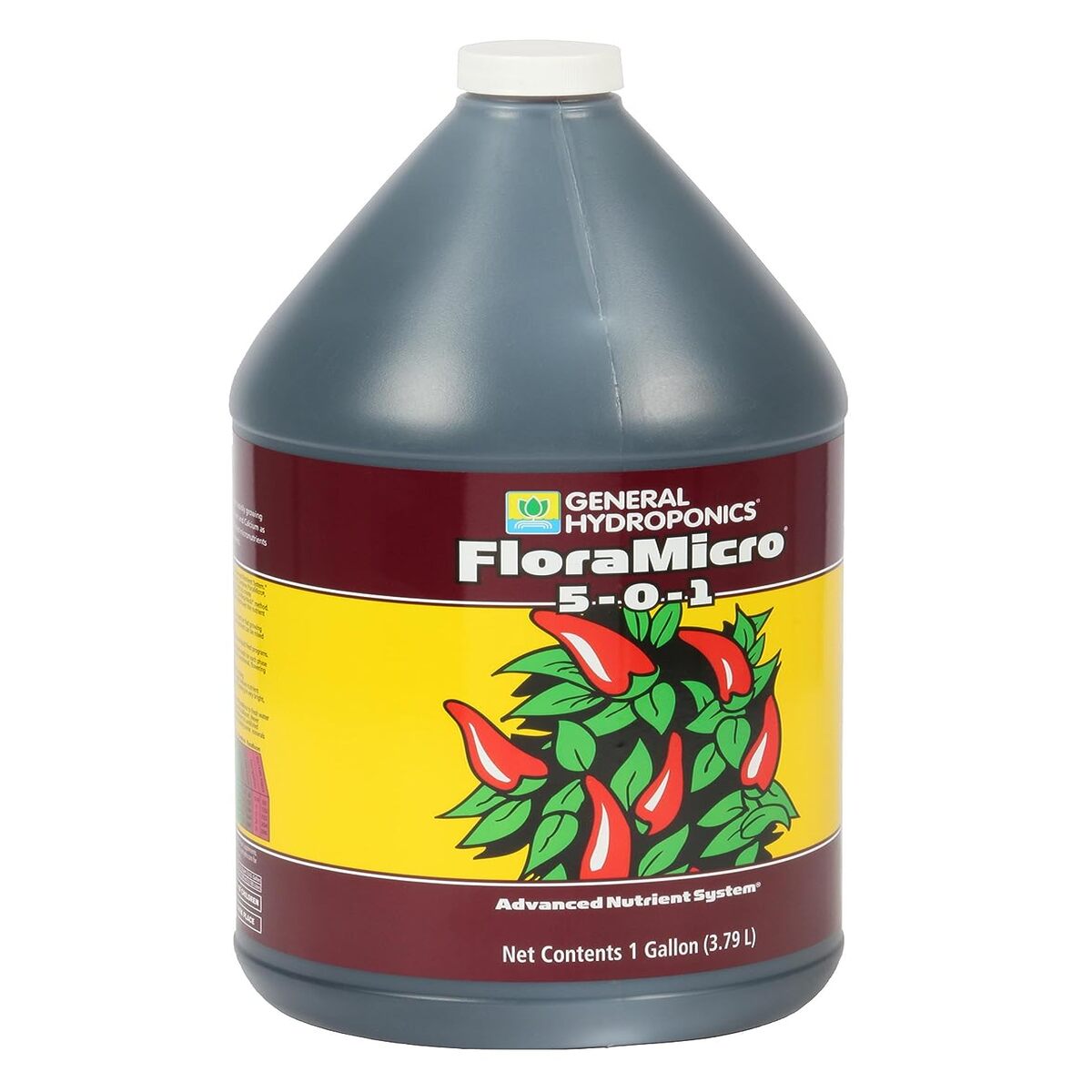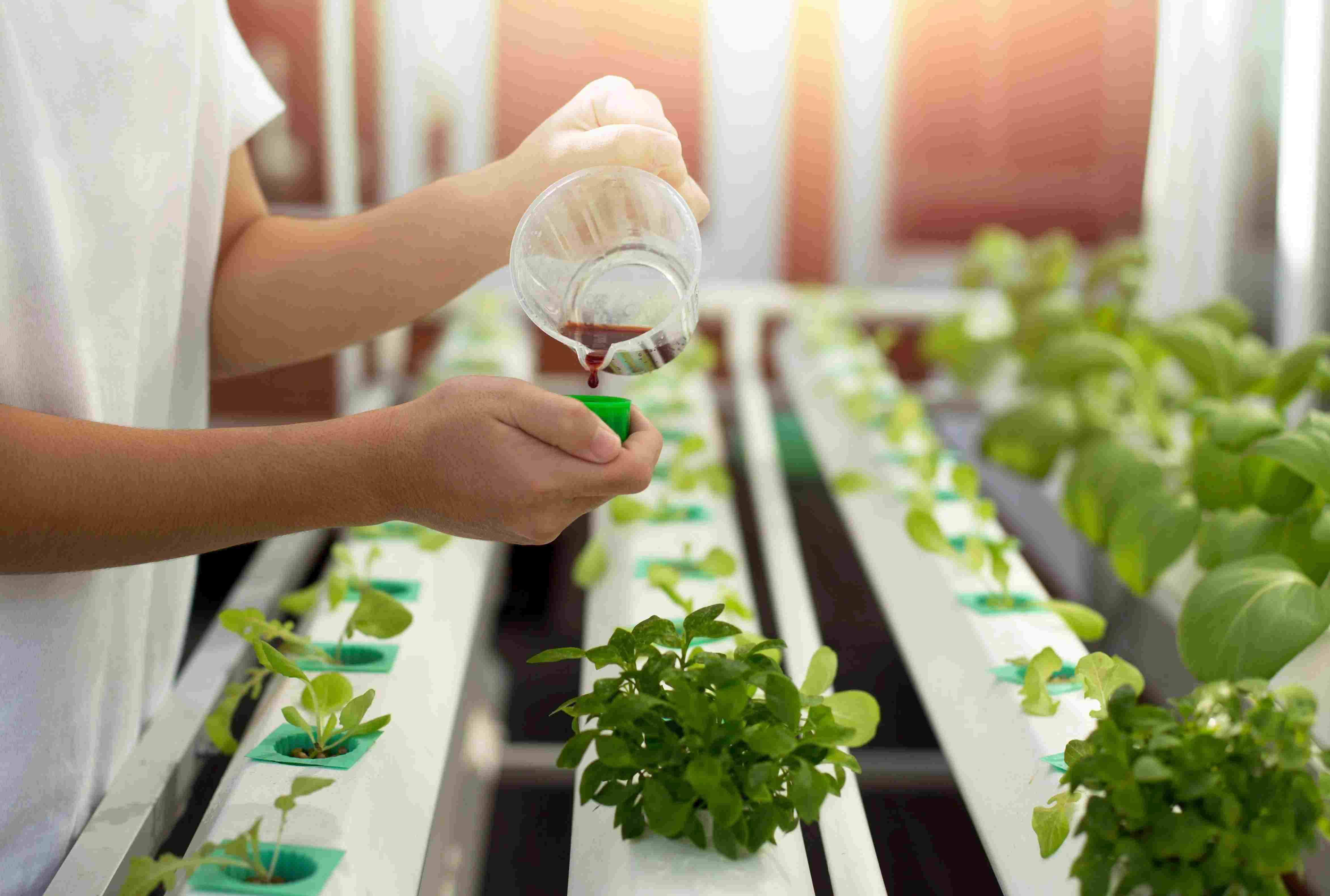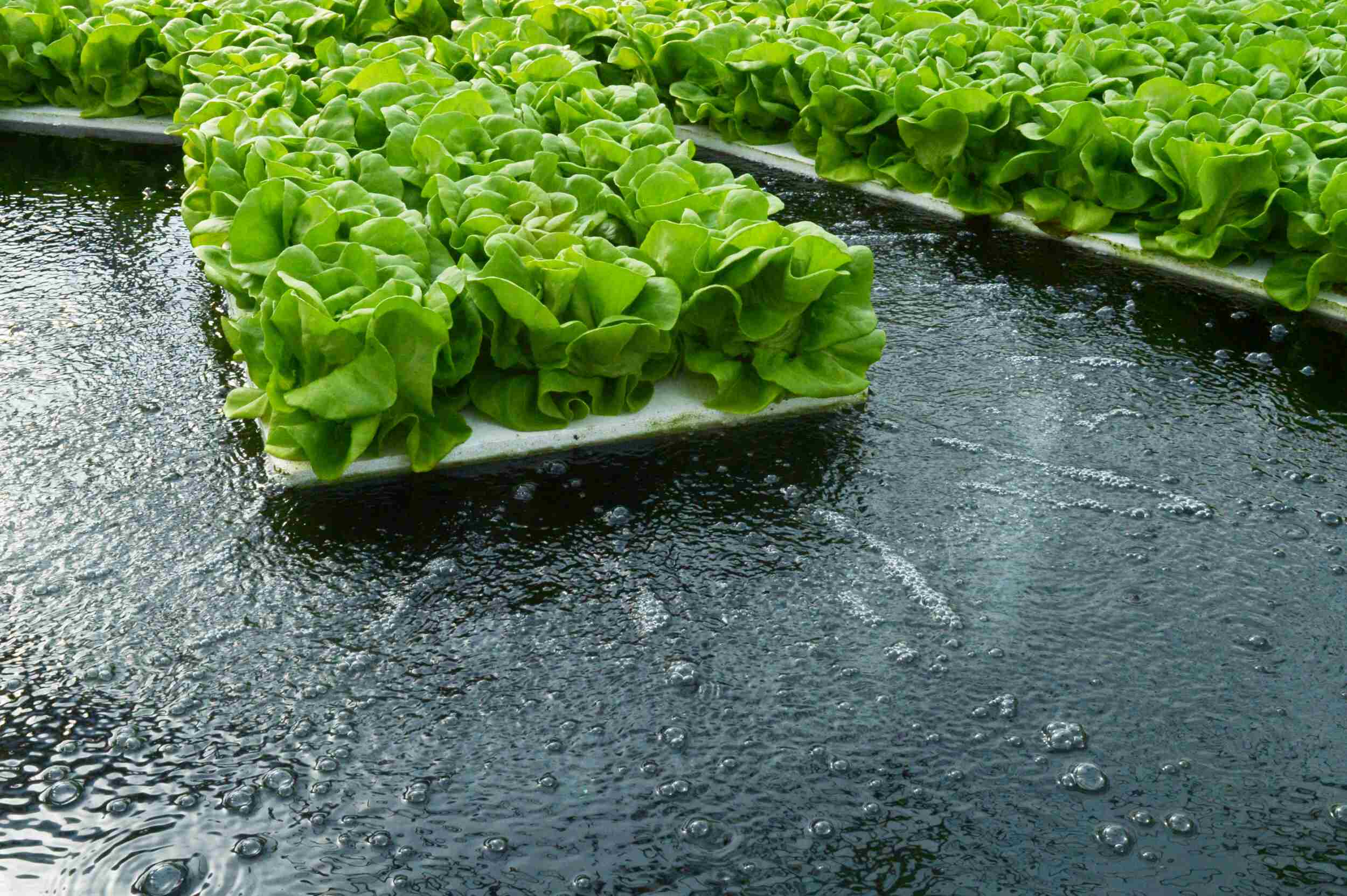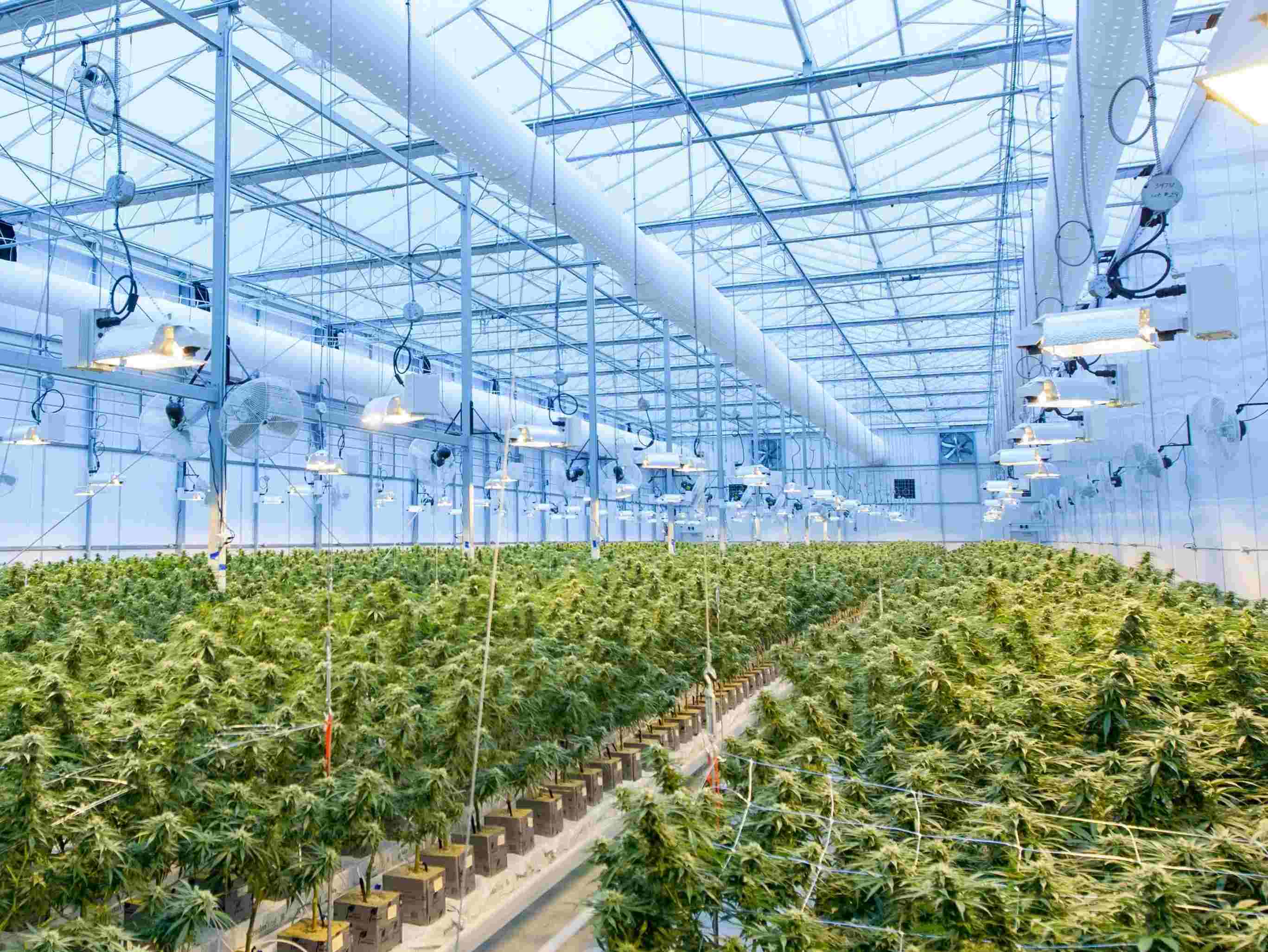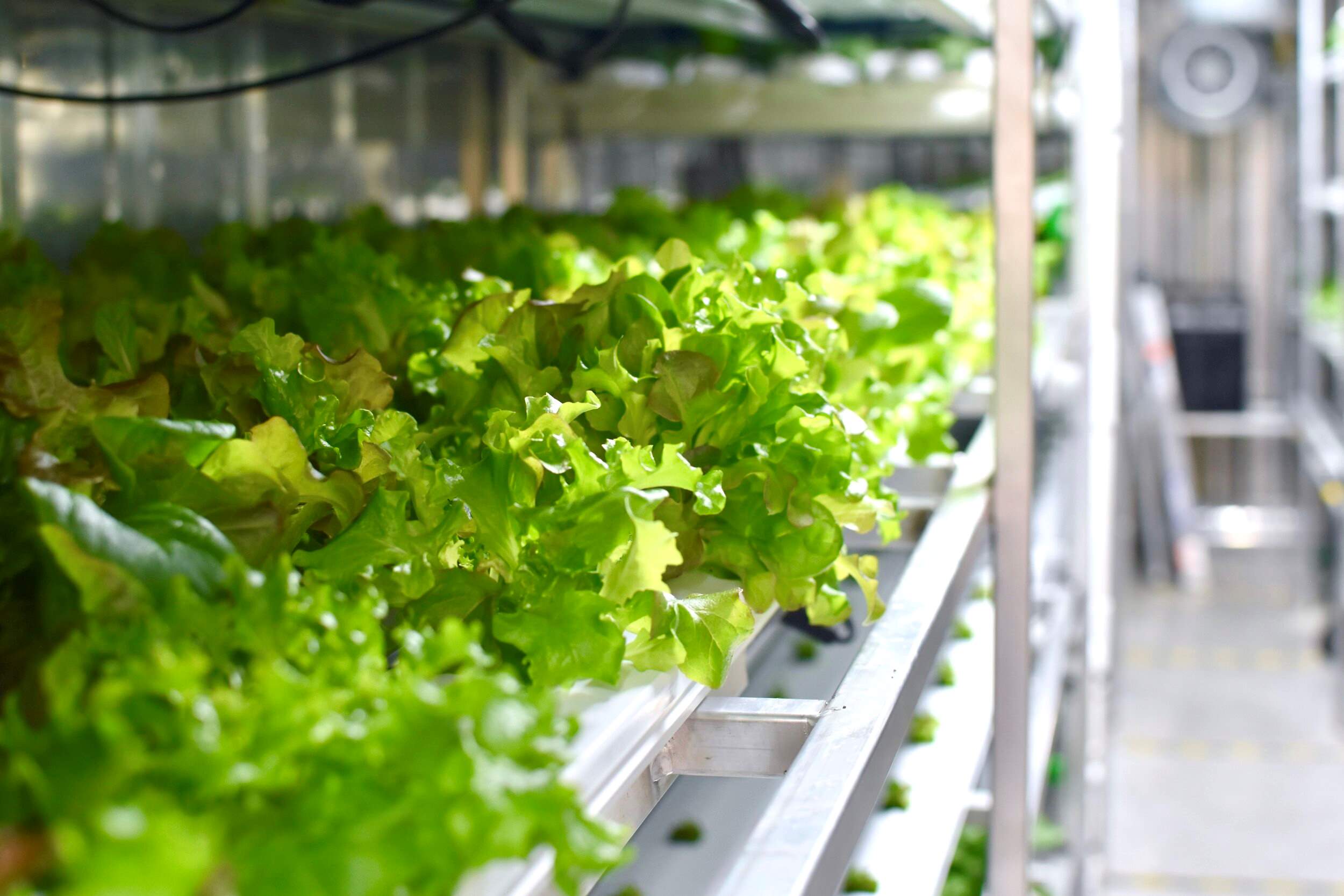Home>Gardening News and Trends>Latest News>What Is Hydroponics


Latest News
What Is Hydroponics
Modified: January 22, 2024
Discover the latest news on hydroponics and learn everything you need to know about this innovative gardening technique that eliminates the need for soil.
(Many of the links in this article redirect to a specific reviewed product. Your purchase of these products through affiliate links helps to generate commission for Chicagolandgardening.com, at no extra cost. Learn more)
Table of Contents
- Introduction
- Definition of Hydroponics
- History of Hydroponics
- Types of Hydroponic Systems
- Advantages of Hydroponics
- Disadvantages of Hydroponics
- Commonly Grown Plants in Hydroponics
- Nutrient Solutions in Hydroponics
- Lighting in Hydroponics
- pH and EC in Hydroponics
- Maintenance and Care in Hydroponics
- Conclusion
Introduction
Welcome to the world of hydroponics, a revolutionary method of growing plants that is gaining popularity among gardening enthusiasts and commercial farmers alike. In this article, we will delve into the fascinating realm of hydroponics and explore its benefits, challenges, and opportunities.
Hydroponics, derived from the Greek words “hydro” meaning water, and “ponos” meaning labor, is a soilless method of cultivating plants in nutrient-rich water solutions. Instead of traditional soil-based gardening, hydroponics utilizes water, mineral nutrient solutions, and various growing mediums to support plant growth.
Unlike conventional farming methods, hydroponics allows plants to receive all the necessary elements for growth directly through their root systems. By providing a controlled environment, nutrients, water, and a tailored lighting system, hydroponics offers an efficient and sustainable way to grow a wide range of plants, from herbs and vegetables to flowers and fruits.
In recent years, hydroponics has gained significant attention due to its numerous advantages over traditional soil-based gardening. By eliminating the need for soil, hydroponic systems can be set up in almost any location, making them suitable for urban areas, rooftop gardens, and even indoor spaces.
Moreover, hydroponics minimizes water usage compared to traditional farming methods, as the water used in the system is recirculated and can be efficiently controlled. This not only conserves precious water resources but also reduces the risk of waterborne diseases and pest infestations.
Another key advantage of hydroponics is enhanced plant growth and yield. With precise control over nutrient levels, pH balance, and lighting conditions, hydroponic plants can grow up to 30-50% faster than their soil-grown counterparts. This accelerated growth rate coupled with the ability to grow plants in stacked vertical systems allows for maximum space utilization.
As we delve deeper into the world of hydroponics, we will explore different types of hydroponic systems, the specific plants that thrive in this environment, the role of nutrient solutions and lighting, and the importance of maintaining optimal pH and electrical conductivity levels. We will also discuss the challenges and considerations involved in maintaining hydroponic systems, to ensure successful cultivation and bountiful harvests.
So whether you’re a gardening enthusiast looking to experiment with a new method of cultivation or a commercial farmer exploring sustainable farming practices, join us on this hydroponic journey to discover the endless possibilities and potential of this modern approach to growing plants.
Definition of Hydroponics
Hydroponics is a method of growing plants without the use of soil, where plants are instead cultivated in nutrient-rich water solutions. This innovative approach to gardening harnesses the power of water, minerals, and tailored growing mediums to provide all the necessary elements for plant growth.
By eliminating the need for soil, hydroponics allows for more precise control over the growing environment, enabling optimal plant growth and increased yields. In hydroponic systems, plants receive the essential nutrients they need directly through their root systems, delivered in a carefully balanced solution.
The absence of soil in hydroponics systems eliminates the risk of soil-borne diseases and pests, providing a cleaner and healthier environment for plant development. This method also optimizes space utilization, making it an ideal choice for urban or limited spaces where soil may be scarce or unsuitable.
Hydroponic systems can be designed in various configurations, ranging from simple homemade setups to sophisticated commercial installations. While each system may differ in its design and components, they all share the common goal of providing plants with the necessary nutrients and water in a controlled and efficient manner.
There are several different types of hydroponic systems, including nutrient film technique (NFT), deep water culture (DWC), aeroponics, and drip irrigation, among others. Each system has its own unique setup and mode of nutrient delivery, allowing for flexibility in cultivating different types of plants.
Hydroponics has become increasingly popular in recent years due to its numerous advantages over traditional soil-based gardening. By utilizing water as the growing medium, hydroponic systems conserve water by recirculating it within the system instead of allowing it to be lost through drainage. This efficient use of water is especially important in regions prone to drought conditions.
Furthermore, hydroponics eliminates the need for chemical pesticides and herbicides, as pests and diseases are less prevalent in soilless environments. This not only reduces the environmental impact but also provides a safer and more sustainable approach to growing food.
Overall, hydroponics offers an innovative and efficient method of growing plants that can be tailored to suit a wide range of environments and produce various crops. By harnessing the power of water, nutrients, and sustainable practices, hydroponics is transforming the way we think about farming and providing a viable solution for the challenges of modern agriculture.
History of Hydroponics
The concept of hydroponics may seem like a modern innovation, but its roots can be traced back to ancient civilizations. The Babylonians, dating as far back as 600 BC, practiced a form of hydroponics by growing plants in nutrient-rich solutions without soil. They used the flowing waters of the Euphrates River to provide the necessary nutrients for plant growth.
Fast forward to the 17th century, where the Dutch scientist Jan van Helmont conducted groundbreaking experiments on plant nutrition. His work laid the foundation for understanding the essential elements plants require for growth. However, it wasn’t until the 19th century that the technology and understanding of hydroponics began to develop.
In 1860, Julius von Sachs, a German botanist, conducted studies on plant nutrition and discovered that plants could thrive when their root systems were immersed in water with dissolved mineral nutrients. This experiment marked a significant milestone in the advancement of hydroponics.
In the early 20th century, Dr. William Frederick Gericke, a professor at the University of California, coined the term “hydroponics” to describe this soilless method of plant cultivation. Gericke conducted extensive research on using water-based nutrient solutions to grow crops commercially.
During World War II, hydroponics gained further attention as a potential solution to food scarcity. With land and resources limited, researchers and scientists explored hydroponics as a means of supplying fresh produce to troops and civilians. This led to the development of innovative hydroponic systems and the refinement of nutrient solutions.
In the second half of the 20th century, hydroponics started to gain popularity among hobbyists and researchers. One notable breakthrough was the development of the nutrient film technique (NFT) by Dr. Allen Cooper in the 1960s, which allowed for continuous nutrient flow to the roots, resulting in improved plant growth and higher yields.
Since then, hydroponics has continued to evolve and expand. With advancements in technology and the growing interest in sustainable agriculture, hydroponics has become a viable method of cultivation for both commercial farmers and home gardeners.
Today, hydroponics is being used in a wide range of applications, including urban farming, greenhouse production, and even space exploration. It offers the potential to overcome the limitations of traditional farming methods and address the challenges of land scarcity, water conservation, and climate change.
As we look to the future, hydroponics will undoubtedly continue to play a crucial role in ensuring food security and sustainable farming practices. The rich history of hydroponics has paved the way for innovative techniques and technologies, allowing us to explore new frontiers in agriculture and redefine the possibilities of plant cultivation.
Types of Hydroponic Systems
Hydroponics offers a variety of system types, each with its own unique features and advantages. These different systems allow growers to customize their setups based on space availability, plant types, and personal preferences. Let’s explore some of the most common types of hydroponic systems:
- Nutrient Film Technique (NFT): In an NFT system, a thin film of nutrient-rich water flows continuously over the plant roots, providing them with nutrients. The roots are exposed to the air, allowing for proper oxygenation. This system is popular for growing plants with shallow root systems, such as lettuce and herbs.
- Deep Water Culture (DWC): DWC is one of the simplest and most popular hydroponic systems. In this method, plant roots are suspended in a nutrient solution with an airstone providing oxygen. The roots receive a constant supply of nutrients as they directly contact the oxygenated water. DWC systems are commonly used for growing larger plants like tomatoes and peppers.
- Aeroponics: Aeroponic systems mist the plant roots with a nutrient solution. The roots are suspended in air with no medium supporting them. The fine mist provides oxygen and nutrients directly to the roots. Aeroponics is highly efficient and allows for fast plant growth. This system is often used in research facilities and for growing delicate or high-value crops.
- Drip Irrigation: Drip irrigation is a widely used hydroponic system that involves dripping a nutrient solution onto the base of each plant. This system typically utilizes a timer to control the frequency and duration of the nutrient delivery. Drip irrigation is versatile, suitable for a wide range of plant types and sizes, making it popular among commercial growers.
- Wick System: The wick system is one of the simplest and most passive hydroponic systems. It uses a wick, usually made of cotton or another absorbent material, to draw the nutrient solution from a reservoir to the plant roots. This system is low-cost and easy to set up, but it is best suited for smaller plants with low nutrient requirements.
These are just a few examples of the many hydroponic systems available. Each system has its own advantages and considerations, and the choice depends on factors such as available space, budget, plant type, and desired level of automation. Regardless of the system chosen, hydroponics offers a versatile and efficient way to cultivate plants in a soilless environment.
Advantages of Hydroponics
Hydroponics offers numerous advantages over traditional soil-based gardening methods. From increased crop yields to resource efficiency, hydroponics is transforming the way we grow plants. Let’s explore some of the key advantages:
- Optimized Plant Growth: By providing plants with a controlled environment and direct access to essential nutrients, hydroponics enables faster and healthier plant growth. Plants grown hydroponically have access to the ideal balance of nutrients, resulting in higher yields and faster maturation compared to traditional soil-based cultivation.
- Water Efficiency: Hydroponics is incredibly water efficient, using up to 90% less water compared to conventional farming methods. Only a fraction of the water is consumed, as hydroponic systems recirculate and reuse the water within the system. This reduces water waste and makes hydroponics a more sustainable option in regions facing water scarcity.
- Space Utilization: Hydroponics allows for maximum space utilization, making it ideal for urban areas and small-scale gardening. By eliminating the need for soil, plants can be grown vertically or in compact configurations, maximizing the use of available space. This is especially beneficial in areas with limited land availability.
- Pest and Disease Control: Hydroponic systems minimize the risk of plant diseases and pests commonly associated with soil-based gardening. As plants are grown in a controlled, clean environment, the chances of pests or soil-borne diseases affecting the plants are significantly reduced. This eliminates the need for chemical pesticides and creates a healthier, safer cultivation method.
- Year-Round Cultivation: With hydroponics, plants can be grown year-round, regardless of seasonal limitations. By controlling the environment, including temperature, humidity, and lighting, growers can create optimum conditions for plant growth at any time of the year. This ensures a consistent supply of fresh produce regardless of external factors.
- Higher Nutrient Density: Hydroponic systems allow for precise control over nutrient levels, resulting in plants with higher nutrient density. By optimizing the nutrient solution, hydroponically grown plants often contain more vitamins, minerals, and antioxidants compared to conventionally grown counterparts.
These advantages highlight the transformative potential of hydroponics in sustainable agriculture. With its water efficiency, space utilization, and minimized reliance on pesticides, hydroponics offers an environmentally-friendly and economically viable solution to food production. As the world faces challenges such as population growth and climate change, hydroponics is emerging as an innovative method to address food security and promote sustainable farming practices.
Disadvantages of Hydroponics
While hydroponics offers numerous advantages, there are also some challenges and limitations to consider. Understanding the potential drawbacks of hydroponics is essential for successful implementation and management of these systems. Let’s explore some of the key disadvantages:
- Initial Cost: Hydroponic systems can have a higher initial investment compared to traditional soil-based methods. The cost of equipment, infrastructure, and specialized nutrients can be significant, especially for larger-scale operations. However, it’s important to note that the long-term benefits and potential for higher yields can offset these initial costs over time.
- Technical Knowledge and Complexity: Hydroponics involves a certain level of technical knowledge and understanding of plant nutrition, water chemistry, and system management. Maintaining the right balance of nutrients, pH levels, and environmental conditions can be challenging for beginners. Proper training and education are crucial to ensure successful hydroponic cultivation.
- System Failure Risks: Hydroponic systems are dependent on technology and equipment functioning properly. Power outages, equipment failures, or disruptions in nutrient supply can have a significant impact on plant health and overall system performance. Backup power sources, regular maintenance, and monitoring systems are necessary to minimize the risks of system failures.
- Dependency on External Inputs: Hydroponics relies heavily on external inputs such as nutrient solutions and artificial lighting. The regular purchase and replenishment of these inputs can add to the overall operational costs of a hydroponic system. Additionally, the reliance on artificial lighting may increase energy consumption, although advancements in energy-efficient lighting have helped mitigate this drawback.
- Plant Vulnerability: In hydroponics, plants are more susceptible to sudden changes in the growing environment. Problems such as power outages, equipment malfunctions, or fluctuations in nutrient delivery can quickly impact plant health. Vigilant monitoring and timely intervention are crucial to prevent plant damage or losses.
- Limited Crop Selection: Although hydroponics can support a wide range of crops, it may not be suitable for every plant variety. Some plants, particularly those with extensive root systems or specific soil requirements, may not thrive in hydroponic systems. Certain crops may also require specialized techniques or equipment to grow successfully in hydroponic environments.
Recognizing these disadvantages allows growers to address potential challenges and make informed decisions when implementing hydroponics. By understanding and mitigating these limitations, hydroponics can continue to be a sustainable and efficient method of plant cultivation that offers numerous benefits for both commercial farmers and home gardeners.
Commonly Grown Plants in Hydroponics
Hydroponics offers a versatile and efficient method of cultivating a wide range of plants. While almost any plant can be grown hydroponically, certain crops thrive exceptionally well in controlled hydroponic environments. Let’s explore some commonly grown plants in hydroponics:
- Leafy Greens: Lettuce, spinach, kale, and other leafy greens are popular choices for hydroponic cultivation. They have shallow root systems and fast growth rates, making them well-suited for nutrient film technique (NFT) or deep water culture (DWC) systems. Hydroponically grown leafy greens are known for their vibrant colors, crisp textures, and nutritional quality.
- Herbs: Herbs like basil, mint, parsley, and cilantro thrive in hydroponic environments. Hydroponics provides precise control over their growing conditions, resulting in robust and flavorful plants. Vertical stacking systems or vertical towers are often used to maximize space utilization when growing herbs hydroponically.
- Tomatoes: Tomatoes are one of the most popular crops grown hydroponically. With proper support and trellising systems, hydroponic tomatoes can reach their full potential, producing larger and sweeter fruits compared to traditional soil-based cultivation. Drip irrigation or nutrient film technique (NFT) systems are commonly used for growing tomatoes hydroponically.
- Peppers: Peppers, including bell peppers, chili peppers, and hot peppers, are well-suited for hydroponic cultivation. They thrive in warm and controlled environments, and hydroponics provides the ideal conditions for their growth. Deep water culture (DWC) or drip irrigation systems are commonly used to grow peppers hydroponically.
- Strawberries: Hydroponics is an excellent method for growing strawberries, as it allows for the precise control of water, nutrients, and lighting their delicate roots require. Vertical systems or ebb and flow systems are commonly used for growing strawberries hydroponically, enabling growers to optimize space and maximize yields.
- Cucumbers: Cucumbers are another popular crop for hydroponic cultivation. With the right support structures and trellising systems, hydroponic cucumbers can produce high yields of long, crisp fruits. Nutrient film technique (NFT) or drip irrigation systems are often used to grow cucumbers hydroponically.
These are just a few examples of the many plants that thrive in hydroponic systems. The controlled environment, tailored nutrient delivery, and optimized growing conditions allow for increased yields, improved flavor, and consistent quality in hydroponically grown crops. As hydroponics continues to evolve, so does the range of plants that can be successfully cultivated using this innovative method.
Nutrient Solutions in Hydroponics
In hydroponic systems, plants receive essential nutrients through a carefully balanced nutrient solution. These solutions provide plants with the necessary elements for growth, replacing the function of soil in traditional gardening. Let’s delve into the details of nutrient solutions in hydroponics:
The nutrient solution in hydroponics consists of a combination of minerals and elements that are essential for plant growth. These include macronutrients such as nitrogen (N), phosphorus (P), and potassium (K), as well as secondary nutrients like calcium (Ca), magnesium (Mg), and sulfur (S). Additionally, micronutrients such as iron (Fe), manganese (Mn), zinc (Zn), and copper (Cu) are also included in the solution, albeit in smaller quantities.
Preparing a nutrient solution requires careful consideration of the specific needs of the plants being grown. The concentration, pH level, and nutrient ratios must be tailored to each crop to ensure optimal growth and development. Monitoring the nutrient levels regularly through water testing is essential to maintain the proper balance and adjust the solution as needed.
Commercially available nutrient solutions are formulated for different plant stages, such as vegetative growth and flowering. These formulations contain the specific nutrients and ratios required at each stage of the plant’s life cycle. Growers can also create their own custom nutrient solutions using individual mineral salts, adjusting the concentrations according to the needs of their plants.
There are various methods to deliver the nutrient solution to the plants. Commonly used techniques include:
- Drip Irrigation: Nutrient solutions are delivered to the plants through a network of tubes and drip emitters. This method allows for precise and targeted delivery of the solution to the plants’ root zones.
- Flood and Drain: Also known as ebb and flow, this method involves periodically flooding the growing containers with the nutrient solution and then draining it back into a reservoir. The process ensures that plants receive regular nutrient uptake while maintaining oxygen levels in the root zone.
- Nutrient Film Technique (NFT): In NFT systems, a thin film of nutrient solution flows over the roots, providing constant contact with the necessary elements. The shallow flow of the solution promotes oxygen exchange and efficient nutrient uptake.
- Aeroponics: In aeroponic systems, the plant roots are misted or sprayed with a nutrient solution. The fine droplets of the solution allow for maximum exposure to nutrients and oxygen, promoting rapid growth and root development.
Proper management of nutrient solutions is vital for maintaining plant health and preventing nutrient imbalances or deficiencies. Factors such as temperature, pH level, and nutrient concentration should be regularly monitored and adjusted as necessary. By ensuring a well-balanced nutrient solution, hydroponic growers can provide their plants with the optimal conditions for healthy growth and high yields.
Lighting in Hydroponics
Light plays a critical role in plant growth, and in hydroponics, it’s essential to provide the right type and intensity of light for optimal plant development. As hydroponic systems are often set up in controlled environments, artificial lighting is commonly used to supplement or replace natural sunlight. Let’s explore the significance of lighting in hydroponics:
Artificial lighting in hydroponics serves to provide plants with the necessary light energy for photosynthesis. Different types of lighting technologies are used, each with its own unique characteristics:
- LED (Light-Emitting Diode) Lights: LED lights are increasingly popular in hydroponics due to their energy efficiency and versatility. LED lights emit specific wavelengths of light that can be tailored to meet the specific needs of different plant species and growth stages. They produce little heat and can be customized to provide a full spectrum of light for optimal growth.
- High-Intensity Discharge (HID) Lights: HID lights, such as metal halide (MH) and high-pressure sodium (HPS) lamps, have long been used in hydroponics. MH lights emit a bluish light that is beneficial for vegetative growth, while HPS lights emit a reddish-orange light that is ideal for flowering and fruiting stages. HID lights provide high-intensity illumination and are suitable for larger, commercial-scale hydroponic operations.
- Fluorescent Lights: Fluorescent lights, particularly T5 and T8 fluorescent tubes, are commonly used for small-scale hydroponics or for providing supplemental lighting. They are energy-efficient, produce less heat, and are cost-effective. Fluorescent lights are suitable for seedlings, clones, or plants with lower light requirements.
When incorporating lighting into a hydroponic system, several factors should be considered:
- Light Intensity: The intensity of light that plants receive is crucial for photosynthesis. Different plant species have varying light intensity requirements. Low-light plants, such as leafy greens, may require lower light intensities, while high-light plants, such as tomatoes or peppers, need more intense lighting to support adequate growth and fruiting.
- Light Duration: The duration of light exposure, commonly referred to as photoperiod, also influences plant growth and flowering. Different plants have specific light requirements for optimal growth, which may vary during various stages of their life cycle. Timers can be used to control the duration of lighting cycles for different stages of plant growth.
- Light Spectrum: Different wavelengths of light impact plant growth in different ways. Blue light promotes vegetative growth, while red light encourages flowering and fruiting. Understanding the specific light spectrum requirements of different plants allows growers to select the appropriate lighting technology or create custom lighting setups to meet their plants’ needs.
Proper lighting management is essential for successful hydroponic cultivation. Regular monitoring of light intensity, duration, and spectrum ensures that plants receive the light they require for healthy growth and optimal yields. The ability to tailor lighting conditions in hydroponics provides growers with a powerful tool to optimize plant development and maximize the potential of their crops.
pH and EC in Hydroponics
pH and EC, which stand for “potential of hydrogen” and “electrical conductivity,” respectively, are two crucial parameters monitored in hydroponics. They play a vital role in maintaining proper nutrient availability and uptake by plants. Let’s delve into the significance of pH and EC in hydroponics:
pH: pH refers to the acidity or alkalinity of a solution and is measured on a scale from 0 to 14. In hydroponics, maintaining the appropriate pH range is essential, as it affects nutrient availability and uptake by plants’ root systems. Different plant species have varying pH preferences, but generally, a pH range between 5.5 and 6.5 is considered optimal for most hydroponic crops.
When the pH is too high or too low, nutrient deficiencies or toxicities can occur, even if the nutrients are present in the solution. For example, in alkaline (high pH) conditions, certain nutrients like iron, manganese, and zinc become less available to plants. Conversely, in acidic (low pH) conditions, nutrients such as calcium and phosphorus can become less available.
To adjust pH levels, substances called pH adjusters or pH buffers, such as phosphoric acid or potassium hydroxide, are used. Regular monitoring of pH levels using pH meters or testing kits is necessary to ensure that plants are receiving the essential nutrients they need to thrive.
EC: EC refers to electrical conductivity and measures the concentration of dissolved salts (ions) in a solution. In hydroponics, EC is used as an indicator of the nutrient concentration in the nutrient solution. The higher the EC, the more concentrated the nutrient solution is.
Monitoring EC levels is crucial to prevent overfertilization or nutrient imbalances, which can be detrimental to plant health. High EC can lead to nutrient accumulation, causing toxicity, while low EC can result in nutrient deficiencies. Different plants have varying EC preferences, and EC levels should be adjusted according to the specific crop being grown.
EC can be adjusted by adding or reducing the amount of nutrient solution in the system or by altering the nutrient concentration. Monitoring EC regularly with the help of an EC meter allows for precise control of nutrient levels and ensures that plants receive the optimal nutrient concentration for their growth stage.
pH and EC are interconnected, as pH can affect EC measurements. Therefore, it’s essential to monitor both parameters simultaneously to maintain the proper nutrient balance and pH levels in the hydroponic system.
By regularly measuring and adjusting pH and EC levels, hydroponic growers can create an optimal growing environment for their plants. Maintaining the appropriate pH and nutrient concentration ensures that plants can efficiently absorb essential nutrients, promoting healthy growth, and maximizing yields in hydroponic cultivation.
Maintenance and Care in Hydroponics
Maintaining a hydroponic system involves regular monitoring and care to ensure optimal plant growth and productivity. From nutrient management to system maintenance, proper attention is crucial. Let’s explore the key aspects of maintenance and care in hydroponics:
Nutrient Management: Monitoring and managing nutrient levels in the hydroponic system are essential for plant health. Regularly testing the nutrient solution’s pH and electrical conductivity (EC) helps maintain the proper nutrient balance. Adjusting nutrient concentrations and pH levels as necessary ensures that plants receive the ideal nutrient uptake for healthy growth.
Water Management: Proper water management is crucial in hydroponics to maintain the right moisture levels and prevent issues such as root rot. Regularly checking water levels and replenishing or replacing it as needed helps ensure a continuous supply of water to the plants.
System Maintenance: Regular maintenance of the hydroponic system is necessary to keep it in optimal condition. This includes cleaning and sanitizing the system to prevent the buildup of algae, bacteria, and other pathogens. Checking and cleaning filters, pumps, and irrigation components helps ensure efficient nutrient delivery and prevents clogs or blockages.
Pest and Disease Control: Although hydroponic systems are less prone to pest and disease issues than soil-based gardening, it’s still essential to vigilantly monitor for any signs of pests or diseases. Implementing preventative measures such as introducing beneficial insects, practicing good hygiene, and regularly inspecting plants can help control and manage any potential pest or disease outbreaks.
Lighting Maintenance: Regularly checking and maintaining the lighting system is important to ensure plants receive the right amount and quality of light. Cleaning light fixtures and replacing bulbs when necessary helps maintain optimal lighting conditions for plant growth.
Crop Rotation and Plant Health: Implementing crop rotation practices helps prevent the buildup of pests, diseases, and nutrient imbalances associated with growing the same crops repeatedly. Rotating crops and practicing good plant health management, such as pruning, trellising, and removing damaged or diseased plant parts, supports overall plant vitality and productivity.
Monitoring and Recordkeeping: Regular monitoring of plant growth, nutrient levels, pH, and EC ensures early detection of any issues and enables timely corrective actions. Keeping detailed records of observations, nutrient adjustments, and any other notable changes helps track the progress of the hydroponic system and assists in refining the cultivation process over time.
Attention to these maintenance and care practices is crucial in hydroponics to create an ideal growing environment and promote successful plant growth. By staying proactive and addressing any issues promptly, hydroponic growers can ensure healthy, thriving plants and maximize their harvest yields.
Conclusion
Hydroponics presents a revolutionary approach to plant cultivation, offering numerous advantages over traditional soil-based gardening. By harnessing water, nutrient solutions, and controlled environments, hydroponics provides a sustainable and efficient method of growing a wide variety of plants.
Throughout this journey into the world of hydroponics, we have explored its definition, history, types of systems, advantages, disadvantages, commonly grown plants, nutrient solutions, lighting, and other aspects of maintenance and care. We have seen how hydroponics allows for precise control over nutrient delivery, water usage, and lighting conditions, resulting in faster growth, higher yields, and the ability to grow plants in a wide range of environments.
While hydroponics does require initial investments, technical knowledge, and regular monitoring, the benefits it offers make it a compelling option for both home gardeners and commercial farmers. From minimizing water usage and space requirements to reducing the risk of pests and diseases, hydroponics presents a sustainable and resource-efficient solution to modern farming challenges.
Hydroponics is continuously evolving with advancements in technology and greater understanding of plant nutrition. It offers immense potential for addressing food security, supporting urban farming initiatives, and promoting sustainable agriculture practices.
Whether you’re a gardening enthusiast looking to experiment with a new way of growing plants or a commercial grower seeking to improve efficiency and productivity, hydroponics provides a viable and exciting option. With careful attention to nutrient management, system maintenance, and plant care, hydroponic growers can unlock the full potential of their crops, achieve exceptional yields, and enjoy the benefits of fresh, healthy, and flavorful produce.
Embark on your hydroponic journey, explore the possibilities, and discover the unlimited potential of this innovative method of plant cultivation.
